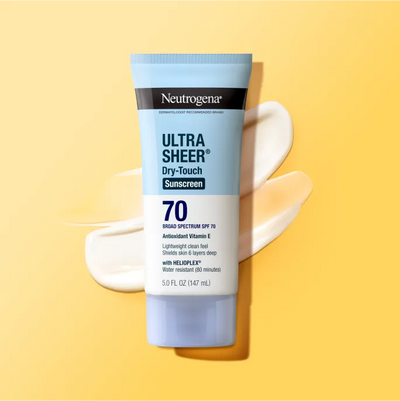Neutrogena

brand rating & evaluation
Neutrogena
Our ratings are based on a scale from 1 (Avoid) to 5 (Top Choice).
See how we rate.
The Shifting Gaia rating evaluates brands based on sustainable practices, ingredients and materials, and social responsibility, among others. Below are a few factors influencing this brand's score:
overview
about
Neutrogena is a mainstream skincare brand under Johnson & Johnson via Kenvue Inc. Highlights
• Some efforts to increase PCR materials in packaging
• Emission reduction efforts
sustainability
details:
Packaging
Neutrogena's packaging is predominantly plastic and single-use. They have pledged 100% recyclable plastic packaging by 2025 and began using post-consumer recycled (PCR) plastic in some items. Neutrogena provides little public detail on packaging materials at the brand level. An independent review found it “doesn't share anything about its packaging materials” and appears to use primarily virgin plastic. There is some use of recyclable/PCR materials and minor reductions in plastic, but far from best practices (plastic-free or circular packaging) and lacking third-party eco-certifications on packaging.
Ingredient Sustainability
The brand continues to use ingredients with high environmental footprints, including petrochemical-derived compounds, non-biodegradable polymers (microplastics), and palm oil derivatives. while Johnson & Johnson established a Responsible Palm Oil Sourcing Criteria and achieved RSPO certification for its supply (scoring 8/9 on WWF's Palm Oil Scorecard), reports indicate continued deforestation links in its palm supply chain.
On the positive side, Neutrogena's parent has developed a Global Aquatic Ingredient Assessment (GAIA) to score ingredient eco-toxicity. However, independent analysts note Neutrogena has no brand-level public commitment to sustainable ingredients. Many components “pose a significant threat to the climate.”
Energy Use and Footprint
Neutrogena does not publicly report its carbon footprint, so we look to its corporate parent's practices. Johnson & Johnson/Kenvue has made substantial climate commitments. The parent reports its greenhouse gas emissions openly and has set Science Based Targets initiative (SBTi)-approved reduction goals. As of the latest data, Kenvue (which includes Neutrogena) used a majority of renewable energy across its operations and achieved a total emissions footprint of ~3.99 million tons CO₂e in recent reporting.
Waste Management
Neutrogena does not run a take-back program for hard-to-recycle items, nor does it widely use upcycled ingredients or multi-use product designs. Most products are single-purpose and disposable after use. In production, there's little public info on waste minimization or factory recycling rates.
Business Model
Neutrogena operates on a traditional mass-market model that leans toward continuous consumption rather than minimalism. The brand offers a wide array of product lines (skincare, haircare, cosmetics, etc.) and regularly introduces new products and line extensions. It often releases seasonal or specialized products (e.g. new sunscreen variations, limited edition cosmetics), and maintains a large inventory of SKUs to cater to various trends and consumer needs.
non-toxic
details:
Ingredient safety is a mixed picture for Neutrogena. On one hand, the brand is known for its dermatologist-tested, non-comedogenic formulations and has eliminated some controversial chemicals in recent years. Many Neutrogena products are now advertised as “free of” parabens, phthalates, dyes, and sulfates. For example, the popular Hydro Boost line is free of those additives. However, the brand does still use certain ingredients that raise health concerns. Notably, Neutrogena continues to include chemical UV filters like avobenzone and octocrylene in sunscreens (while FDA-approved, these have been scrutinized for hormone-disrupting potential).
Neutrogena generally meets government safety standards and has phased out the most egregiously toxic ingredients of past decades (like triclosan, formaldehyde donors, etc.), but it hasn't gone as far as clean beauty leaders in eliminating all moderate-risk chemicals.
social responsibility
details:
Neutrogena's labor and supply chain standards are mainly governed by its parent company's policies. Johnson & Johnson (now Kenvue for consumer products) has a Supplier Code of Conduct that prohibits forced and child labor, assures workers' right to collective bargaining, and requires safe working conditions. However, Neutrogena provides minimal public transparency about how those standards are enforced. Third-party audits (e.g. SMETA or Fair Trade certification) are not evident for the brand's production.
Neutrogena is not a cruelty-free brand. The company's official policy states that it does not test its cosmetics on animals except when required by law. Neutrogena sells its products in countries like mainland China, where animal testing on certain cosmetics has historically been mandated.
The brand has a history of cause-marketing campaigns, especially targeting youth and health causes. Still contributions remain on a limited scale and often as one-off campaigns.
